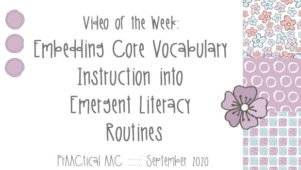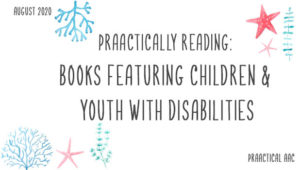AACtual Therapy: AAC, Literacy and Squishy Books
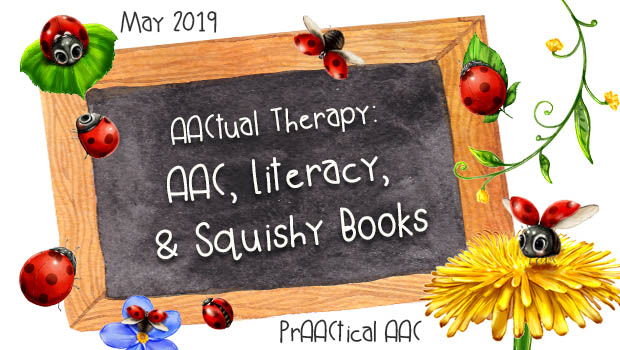
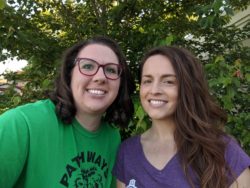 Looking for a fun way to integrate more emergent literacy into your AAC work? You’re in the right place! Today, SLPs Maggie Judson and Jeanna Antrim share one of their many ideas for engaging therapy sessions. Maggie and Jeanna who work in the Assistive Technology Department for the Belleville Area Special Services Cooperative (BASSC) in southern Illinois. They are AT/AAC facilitators and provide evaluations, direct therapy, consultations, and trainings with school teams. You can see a previous guest post that Jeanna wrote here. Let’s hear how they make and use squishy books in their therapy sessions.
Looking for a fun way to integrate more emergent literacy into your AAC work? You’re in the right place! Today, SLPs Maggie Judson and Jeanna Antrim share one of their many ideas for engaging therapy sessions. Maggie and Jeanna who work in the Assistive Technology Department for the Belleville Area Special Services Cooperative (BASSC) in southern Illinois. They are AT/AAC facilitators and provide evaluations, direct therapy, consultations, and trainings with school teams. You can see a previous guest post that Jeanna wrote here. Let’s hear how they make and use squishy books in their therapy sessions.
:::::::::::::::::::::::::::::::::::::::::::::::::::::::::::::::::::::::::::::::::::::::::::::::::::::::::::::::::::::::::::::::::::::::::::::
AAC, Literacy and Squishy Books
If you’ve done any reading or research around the topic of AAC and literacy, you know that students with complex communication needs do not typically get the same kinds of experiences with literacy activities as do their peers (Light & Kent-Walsh, 2003). So we are always on the lookout for fun and functional activities that can target reading and writing skills for our students who use AAC. Especially activities that are age respectful and take into account the interests of our students. Cue the squishy book! 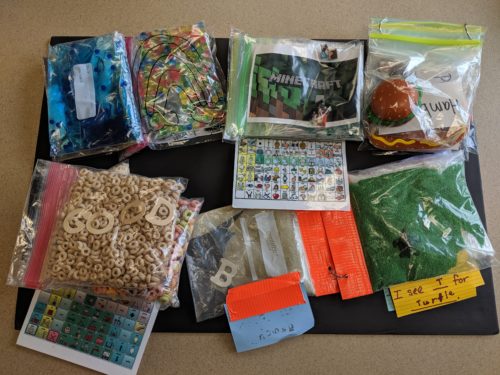
Students are typically more engaged and demonstrate increased participation during shared reading and writing activities when interacting with literacy materials that are motivating to them (Light, 2012). Students with complex communication needs may demonstrate sensory-related interests and the desire to explore books physically. However, finding appropriate books that are age-respectful, hands-on, and that address sensory interests can be difficult. So what is an AAC SLP to do? Our answer was to create sensory experience books that meet the literacy needs of our entire caseload!
A squishy book is a book you make that capitalizes on the sensory interests of your students. The concept is simple: plastic bags filled with a variety of squishy materials to create ‘pages’ that are attached together to create a ‘book’. Now that is an extremely basic description of a very creative and motivating activity, so let’s look at it in more detail!
How to Create a Squishy Book:
Materials:
- Plastic Bags. We have found quart-sized bags work well. We suggest double bagging liquid materials.
- Squishy Materials. Examples: hair gel, shredded paper, sand, lotion, gak, foam beads
- Fun Extras! Spice up your squishy materials by adding food coloring, glitter, or beads.
- We like wood, plastic, and foam letters.
- Packing Tape and/or Binding Rings
Assembly:
- Fill the bag with squishy material.
- Add in any fun extras (e.g., food coloring, glitter, or beads).
- Add one letter (e.g., random or specific to material in the bag), or add multiple letters that spell a specific word (e.g., turn).
- Repeat – We like to create a book with 4-6 pages to really give it that feel of a book, so students can experience a front, a back, and turning pages.
- Attach the pages together. We have used packing tape, duct tape, and binding rings to do this.
So now that you have the basics down on the squishy book let’s kick it up a notch! When creating squishy books, there are so many possibilities. Pretty much anything you would use to create a sensory bin, sensory bottle, or a sensory bag can be turned into a squishy book. And what is great is that you can tailor it to the specific interests of your students. If one student really likes play-doh, make a book with a different color of play-doh in each bag. If another student likes things that make noise, fill a book with little jingle bells, googly eyes, and bubble wrap. You get the idea! And to step up your squishy book game, even more, try adding a title page and a back cover to really drive home the fact that a squishy book is just that – a book! 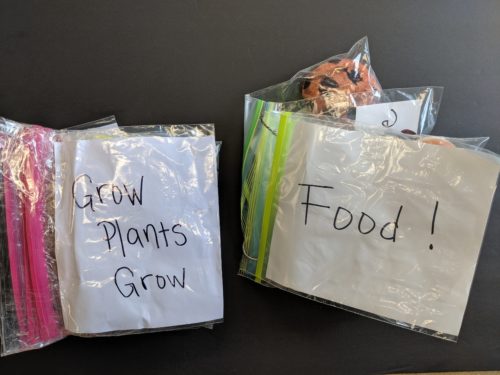
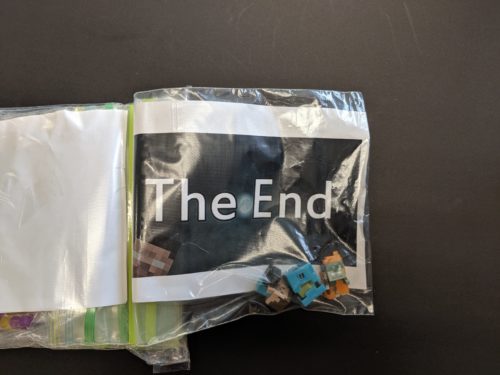
More ideas to try out:
- Cereal Book: A variety of different crunchy cereals were used to create a book around the topic of breakfast.
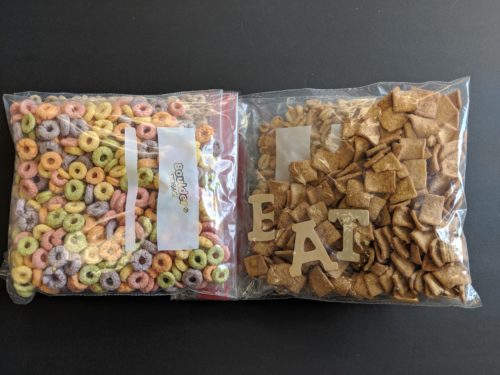
- Plant Growing Book: Each page represents the steps needed for plants to grow: seeds in dirt, sunshine, clouds, rain and a rainbow (because who doesn’t like rainbows?) and then finally, green plants. Great for spring!
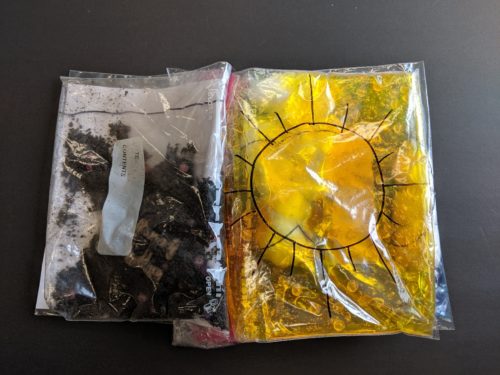
- Beach Book: We used different colored sand and put a variety of beach items on each page. Perfect for summer!

- Minecraft Book: This is an example of a squishy book that capitalizes on a student-specific interest.
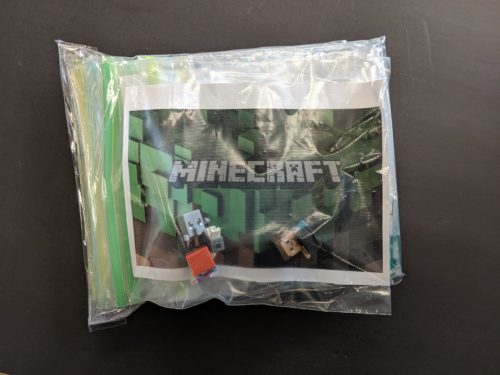
When creating squishy books, consider making them with your students! We have found that students are typically more interested, proud, and invested in activities that they had a hand in creating. Let them help pick the topic or theme of the book and the materials. There are so many language concepts and core words to target while making the book – open up, put in, get more, add colors, find letters, close tight, tape together, this one, that one. You can get a whole crafty lesson out of it!
Now that your book is created, the real fun begins. Use your new squishy book to engage your students in a shared reading experience. Explore, interact, and talk about the book as you do a picture walk through of each page. Let your students grab, squish, pinch, push, and get hands-on with the book. Help foster their experience with different literacy concepts, such as holding the book, finding the front and back of the book, turning pages, and interacting with a communication partner during shared reading.
And of course, to really make it a book, add text to the pages. Come up with words, phrases, and/or sentences that are appropriate for your students. Or as your students make comments, add that text to each page. You can do this by writing the words or phrases on a post-it note or index card and taping it onto the page. 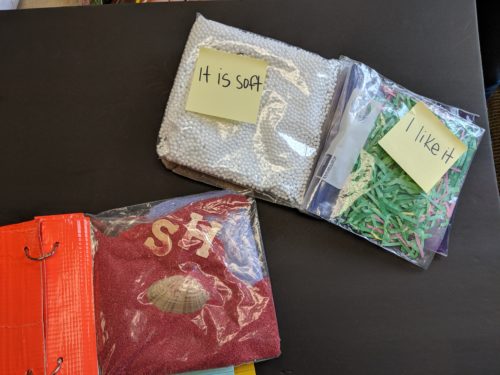 In order to make it easy to provide aided language input and to provide our students with quick access to AAC supports during this literacy experience, we attach a manual communication board to the last page of the book with velcro.
In order to make it easy to provide aided language input and to provide our students with quick access to AAC supports during this literacy experience, we attach a manual communication board to the last page of the book with velcro. 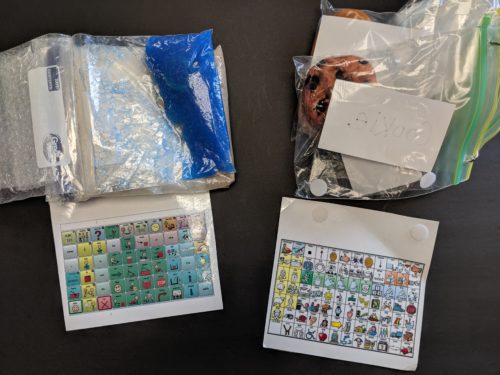 This way each communication partner can easily access core vocabulary while interacting with the book!
This way each communication partner can easily access core vocabulary while interacting with the book!
Squishy books are great for reading, but are equally as awesome for writing! We know that providing our students with meaningful and fun writing topics to structure emergent writing activities is essential (Light, 2012). And what can be more fun for students than writing about a book that they helped create?!
Ways to provide writing opportunities:
- You can write down ideas and thoughts your students generate during shared reading/writing activities.
- You can let your students do their own letter-by-letter generative writing during independent writing.
- You can flip that manual communication board around to the blank page, so that students can write with a dry erase marker.
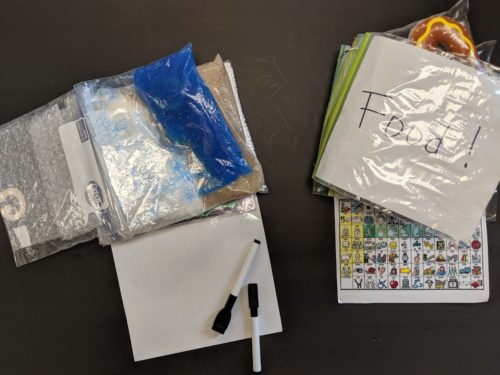
- Another idea is to add in a pre-planned writing page to the end of the book.
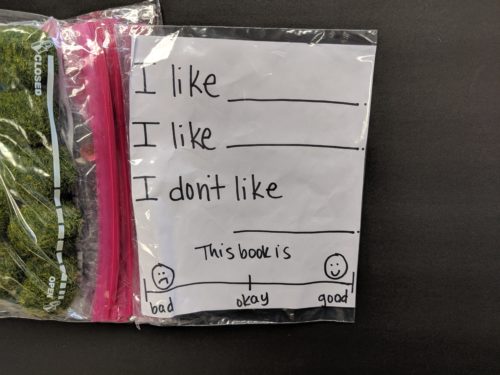
We are loving the squishy books we have made and are having a blast using them with our students! They make for a great multi-sensory experience that creates accessible and interactive literacy opportunities in our therapy sessions. We have found that all of our students enjoy the squishy books and as such, we are enjoying lots of talking, reading, and writing interactions. A total win-win!
- To see a step-by-step squishy book tutorial check out our YouTube video: https://youtu.be/zrv5pENWSKA
- To see more ideas and tips for squishy books check out our YouTube video here: https://youtu.be/5GKAX4eipz8
- Follow us on Instagram @basscAAC and subscribe to our YouTube channel basscAAC for more AAC implementation ideas!
- To learn more about squishy books check out this resource from the Nevada Dual Sensory Impairment Project.
References
- Light, J. (2012, March). Improving Literacy Outcomes for Students with Complex Communication Needs. Presentation at Pennsylvania Department of Education Annual Conference, Hershey, PA. [Handout]
- Light, J. & Kent-Walsh, J. (2003, May). Fostering Emergent Literacy for Children Who Require AAC. The ASHA Leader, 8 (10), 4-29. doi.org/10.1044/leader.FTR1.08102003.4
Filed under: Featured Posts, PrAACtical Thinking
Tagged With: beginnin communicator, Books, DIY, emergent literacy, reading
This post was written by Carole Zangari

